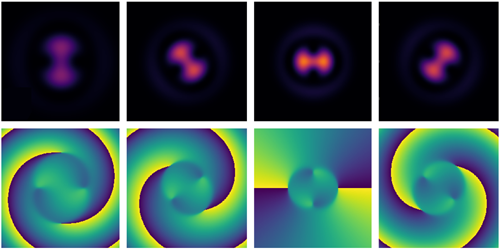A Quantum Gas Microscope with Depth Perception
Atoms in an optical lattice offer a promising system for performing quantum simulations or for carrying out quantum computations (see Synopsis: Milestone for Optical-Lattice Quantum Computer). But to use these atoms effectively, the exact positions of the atoms need to be known—information that can be surprisingly difficult to obtain. A quantum gas microscope—the tool of choice for imaging atomic lattices—can pinpoint the horizontal positions of atoms in a lattice but struggles when it comes to measuring their vertical depth. Now Tangi Legrand at the University of Bonn, Germany, and colleagues have developed a technique for measuring that depth to within a few hundred nanometers [1]. This precision is high enough to map the positions of atoms distributed across different levels of a three-dimensional lattice.
Like a conventional quantum gas microscope, the team’s instrument works by exciting atoms with a short laser pulse tuned to one of the atoms’ transition frequencies. The fluorescence signal subsequently emitted when the atoms relax is collected and transmitted to the imaging apparatus. In the new instrument the fluorescence signal passes through a spatial light modulator before it reaches the camera. This modulator imprints a structured phase pattern on the signal, which elongates the instrument's point-spread function—a visual representation of the way an ideal point source appears in a given imaging system. The orientation of this elongated point-spread function rotates as the light propagates along the optical axis, providing precise information about the atoms’ distances.
In its current form, the team’s device can map the three-dimensional positions of atoms in a sparsely populated lattice, where atoms don’t overlap vertically. Legrand says that more work is needed to map atoms in a more densely packed structure.
–Marric Stephens
Marric Stephens is a Corresponding Editor for Physics Magazine based in Bristol, UK.
References
- T. Legrand et al., “Three-dimensional imaging of single atoms in an optical lattice via helical point-spread-function engineering,” Phys. Rev. A 109, 033304 (2024).




